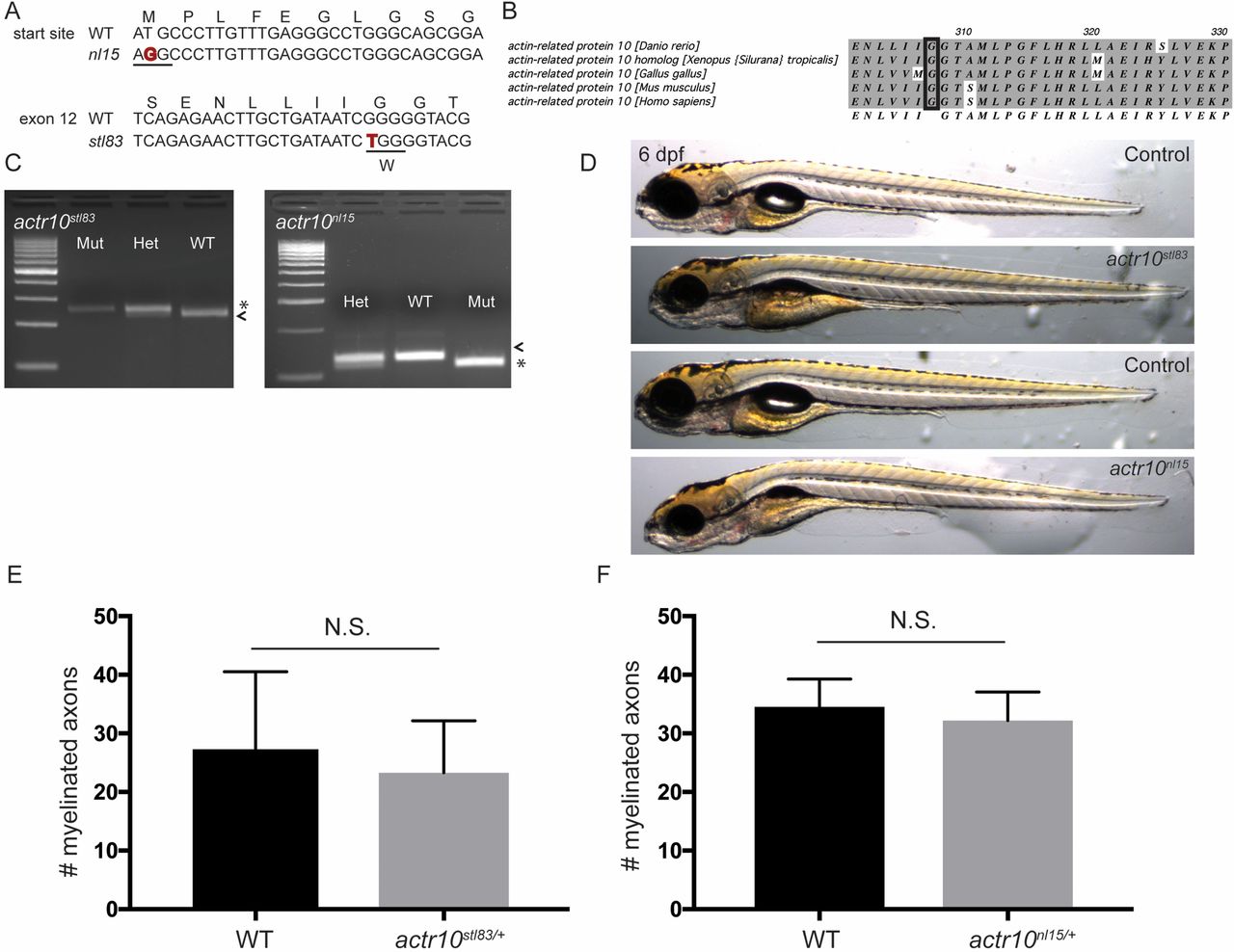Fig. s1
nl15 and stl83 are alleles of actr10 (related to Figs. 1 and 2). (A) The nl15 allele is the result of a mutation in the start site (T to G), while the stl83 allele results from a G-to-T transition. (B) The Actr10/Arp11 amino acid sequence is highly conserved across species, and the glycine altered in the stl83 allele is completely conserved from zebrafish to human (black rectangle). (C) A dCAPS genotyping assay for stl83 inserts an AvaI restriction site in WT, leading to a 224-bp major band in WT used for genotyping (arrowhead) and a minor fragment of 22 bp. Mutants have a 244-bp fragment (asterisk). The nl15 mutation introduces an HaeIII site in mutants resulting in a major band at 112 bp (asterisk) and shorter bands at 50 bp and 14 bp, while WT has a major band at 126 bp (arrowhead) and a minor band of 50 bp. (D) Neither stl83 nor nl15 mutants develop a swim bladder. However, stl83 mutants appear generally healthier than nl15 mutants at 6 dpf. (Magnification: 20×.) (E) There is no significant difference in number of myelinated axons in the ventral spinal cord between sibling actr10+/+ (n = 3) and actr10stl83/+ (n = 4) animals (P < 0.61). (F) Similarly, there is no difference in number of myelinated axons between sibling actr10+/+ (n = 3) and actr10nl15/+ (n = 3) animals. Unpaired t test with Welch’s correction used for statistical analyses. N.S., nonsignificant.

